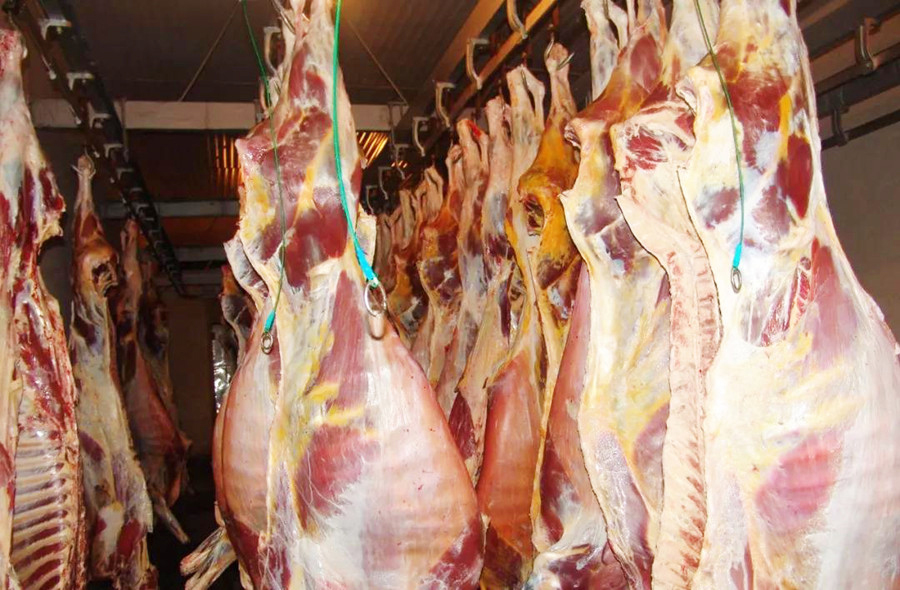1. Acid Excretion
“Acid excretion” is an important part of meat processing technology. It is the process of quickly cooling the carcass after slaughter to 15-16℃, and hanging it vertically in a safe environment with minimal negative losses such as bacteria, oxidation, and dry consumption, to complete the maturation of the meat and obtain the greatest economic benefits.
2. The factors that affect the rate and effect of acid excretion.
Eliminating the live cattle stress response, hunger before slaughter, stunning slaughter, and correct assassination and bloodletting are all factors that ensure the smooth progress of acid excretion. Electric stunning is one of the keys to promoting acid excretion. It greatly shortens the time required and highly improves the quality. In addition, the factor that affects acid discharge is temperature, the higher the temperature, the faster the acid discharge rate.
3. Facilities for Acid Excretion Process
The main facility to complete the acid discharging process is the acid discharging room, which must reach 0-15℃, with temperature adjustment or automatic program temperature control. With wind speed control, the speed is 0~3 meters per second. The humidity is controlled at a relative humidity of 80% to 98%. It should be easy to clean and disinfect, easy to enter and exit the warehouse and adapt to the size of the product. The effective storage height is not less than 4.5 meters to prevent the large carcass from touching the ground.
4. Acid Excretion Steps
The hot carcass of cattle enters the acid discharge room. The temperature is controlled at 12℃, the relative humidity is 95% to 98%, the wind speed is 1 to 2 meters per second, and the temperature is quickly reduced to 15℃ to 16℃ for 10 to 16 hours to complete the stiffness. After 36 hours of suspension, the temperature of the storage is reduced to 0-5 degrees Celsius, the relative humidity is 95%-96%, and the air is naturally convective for another 36 hours. The carcass muscles become soft and the muscle PH value drops to 5.4-5.8, and the acid discharge is completed.
5. Extended information
After the cattle are slaughtered, the somatic cells lose the blood’s oxygen supply to them and carry out anaerobic respiration, thereby producing a substance harmful to the human body-lactic acid. Acid excretion refers to the decomposition of lactic acid into carbon dioxide, water, and alcohol at a certain temperature (down to 0°C-4°C within 24 hours), humidity, and wind speed according to the time when the carcass enters the acid excretion storage. At the same time, the macromolecular adenosine triphosphate in beef cells is decomposed into fresh substances-base glycosides (namely IMP, the main component of MSG) under the action of enzymes. The pH of the meat is changed, and the metabolites are decomposed and discharged to the greatest extent.




